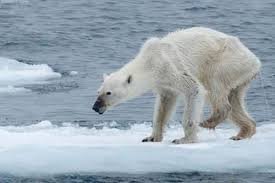Thawing of the poles

The melting of the poles accelerates
The thawing of the poles in the Arctic and Antarctic is already a fact demonstrated by the international scientific community. Climate change, caused mainly by the emission of greenhouse gases into the atmosphere, has affected many ecosystems.
The melting of the poles accelerates. There is evidence that the temperature of the oceans has increased, which could be the original trigger of the thinning of the ice cap. The temperature of the Earth's surface is also changing and affecting warming. The year 2014 was the warmest recorded since 1880. How does this affect the poles of the planet? The melting situation of the glaciers that Antarctica is suffering has been classified as irreversible.
It is in this area of the planet, together with Greenland where there is most an increase in sea level.
On the other hand, the ice cover of the lakes was reduced to 22% in twenty years, between 1991 and 2011, as a consequence of climate change, according to the European Space Agency (ESA).
It is indisputable that the effects of climate change are having an impact on these fragile areas of the planet, where a variation in temperatures has tragic consequences.
In fact, if the greenhouse gases continue to rise, the melting will cause an elevation of the global ocean of between 1 and 37 centimeters.
However, do not forget that the melting seriously disturbs the fauna and flora of the coastal regions and that it completely changes the life of the polar zone, for example the access to the food of the polar bears. Ocean currents are also altered, which can cause temporary and unforeseen climatic phenomena. In fact, some situations have already been observed, such as in the Arctic Ocean, where waves of up to five meters in height have been detected for the first time, which are largely due to the rapid retreat of the ice.